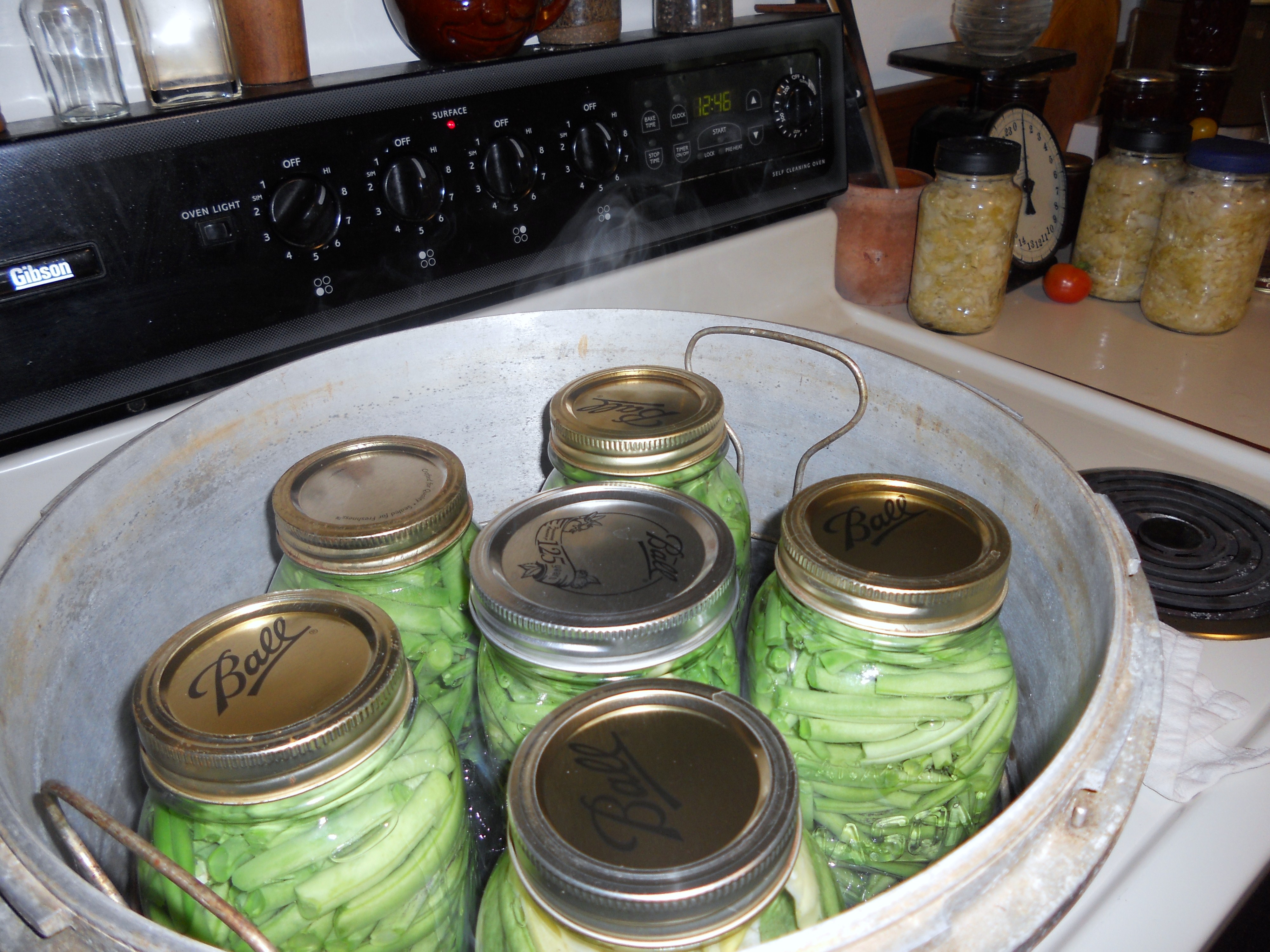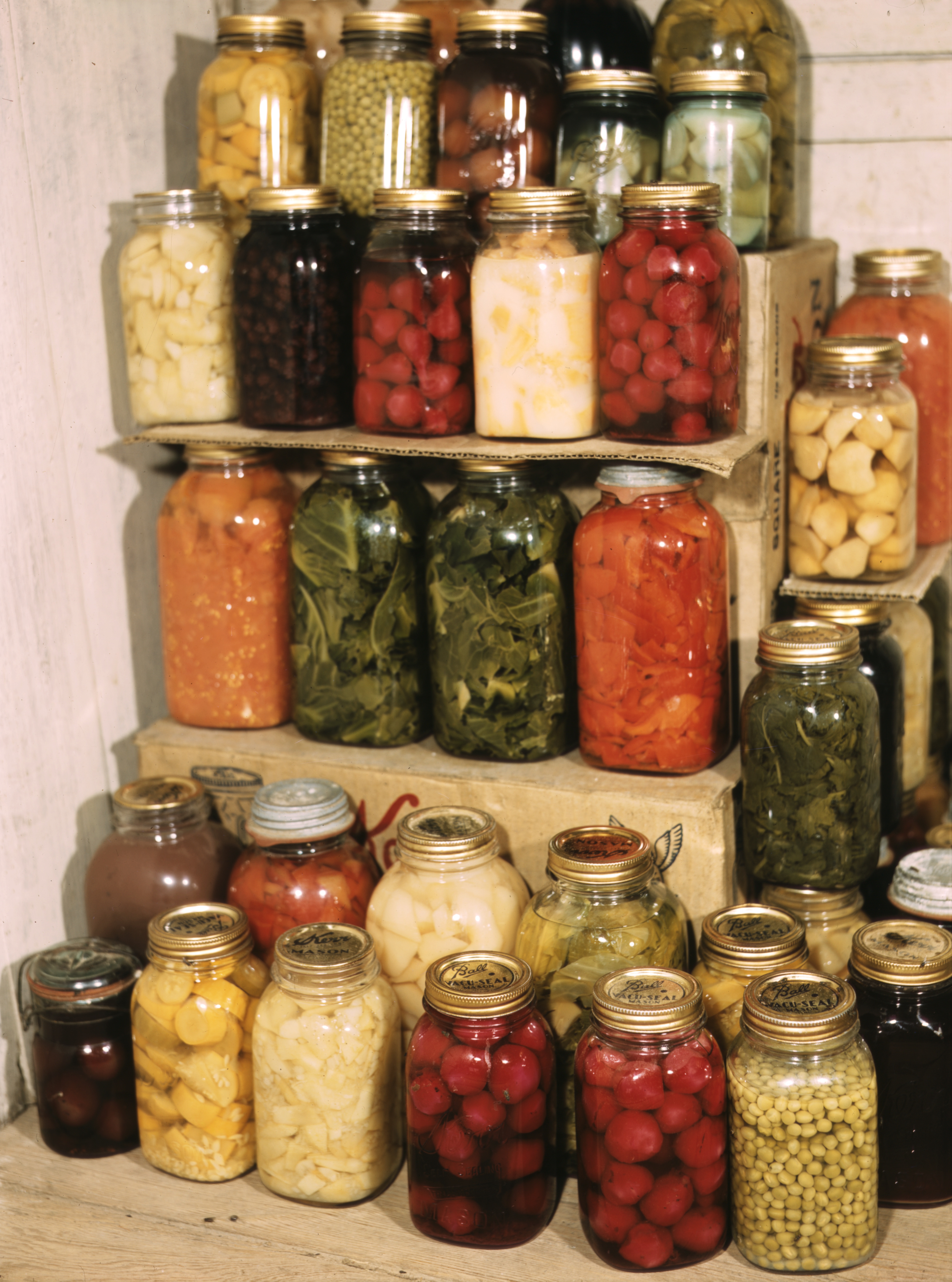|
Fowler's Vacola
The Fowler's Vacola jar is a molded glass jar used in canning for food preservation. It is the most popular home canning system in Australia. History The system was developed in 1915 in Melbourne, Australia, by Joseph Fowler (28 February 1888 – 24 April 1972), who migrated from England in 1912, at his home in Hawthorn, Victoria, and became very popular. The jar The Fowler's Vacola system uses glass jars, single use rubber ring seals and pressed metal lids, much like American Mason jars first patented in 1858, except that the jars and lids are not threaded. During the canning process, while still hot (and presumably sterile), the lids are secured by metal tension clips which are removed once cooled and a vacuum seal has formed. Other equipment marketed by the company included a large electrically heated waterbath and "sterilizing thermometer", a glass thermometer mounted on a concave stainless steel backing, graduated in both degrees Celsius and Fahrenheit. Availability F ... [...More Info...] [...Related Items...] OR: [Wikipedia] [Google] [Baidu] |
Canning
Canning is a method of food preservation in which food is processed and sealed in an airtight container ( jars like Mason jars, and steel and tin cans). Canning provides a shelf life that typically ranges from one to five years, although under specific circumstances, it can be much longer. A freeze-dried canned product, such as canned dried lentils, could last as long as 30 years in an edible state. In 1974, samples of canned food from the wreck of the '' Bertrand'', a steamboat that sank in the Missouri River in 1865, were tested by the National Food Processors Association. Although appearance, smell, and vitamin content had deteriorated, there was no trace of microbial growth and the 109-year-old food was determined to be still safe to eat. History and development French origins During the first years of the Napoleonic Wars, the French government offered a hefty cash award of 12,000 francs to any inventor who could devise a cheap and effective method of preservi ... [...More Info...] [...Related Items...] OR: [Wikipedia] [Google] [Baidu] |
Food Preservation
Food preservation includes processes that make food more resistant to microorganism growth and slow the oxidation of fats. This slows down the decomposition and rancidification process. Food preservation may also include processes that inhibit visual deterioration, such as the enzymatic browning reaction in apples after they are cut during food preparation. By preserving food, food waste can be reduced, which is an important way to decrease production costs and increase the efficiency of food systems, improve food security and nutrition and contribute towards environmental sustainability. For instance, it can reduce the environmental impact of food production. Many processes designed to preserve food involve more than one food preservation method. Preserving fruit by turning it into jam, for example, involves boiling (to reduce the fruit's moisture content and to kill bacteria, etc.), sugaring (to prevent their re-growth) and sealing within an airtight jar (to prevent re ... [...More Info...] [...Related Items...] OR: [Wikipedia] [Google] [Baidu] |
Home Canning
Home canning or bottling, also known colloquially as putting up or processing, is the process of preserving foods, in particular, fruits, vegetables, and meats, by packing them into glass jars and then heating the jars to create a vacuum seal and kill the organisms that would create spoilage. Though ceramic and glass containers had been used for storage for thousands of years, the technique of canning which involves applying heat for preservation was only invented in the first decade of the 1800s. Before that, food storage containers were used for non-perishable foods, or with preservatives such as salt, sugar, vinegar, or alcohol. Techniques Water bath canning Water bath canning is appropriate for high-acid foods only, such as jam, jelly, most fruit, pickles, and tomato products with acid added. It is ''not'' appropriate for meats and low-acid foods such as vegetables. This method uses a pot large enough to hold and submerge the glass canning jars. Food is placed in glass can ... [...More Info...] [...Related Items...] OR: [Wikipedia] [Google] [Baidu] |
Melbourne
Melbourne ( ; Boonwurrung/ Woiwurrung: ''Narrm'' or ''Naarm'') is the capital and most populous city of the Australian state of Victoria, and the second-most populous city in both Australia and Oceania. Its name generally refers to a metropolitan area known as Greater Melbourne, comprising an urban agglomeration of 31 local municipalities, although the name is also used specifically for the local municipality of City of Melbourne based around its central business area. The metropolis occupies much of the northern and eastern coastlines of Port Phillip Bay and spreads into the Mornington Peninsula, part of West Gippsland, as well as the hinterlands towards the Yarra Valley, the Dandenong and Macedon Ranges. It has a population over 5 million (19% of the population of Australia, as per 2021 census), mostly residing to the east side of the city centre, and its inhabitants are commonly referred to as "Melburnians". The area of Melbourne has been home to Abori ... [...More Info...] [...Related Items...] OR: [Wikipedia] [Google] [Baidu] |
Hawthorn, Victoria
Hawthorn is an inner suburb of Melbourne, Victoria, Australia, east of Melbourne's central business district, located within the City of Boroondara local government area A local government area (LGA) is an administrative division of a country that a local government is responsible for. The size of an LGA varies by country but it is generally a subdivision of a State (administrative division), state, province, divi .... Hawthorn recorded a population of 22,322 at the 2021 census. Glenferrie Road, Hawthorn, is designated as one of 82 Major Activity Centres in the Melbourne 2030 Metropolitan Strategy. History The name Hawthorn, gazetted in 1840 as "Hawthorne", is thought to have originated from a conversation involving Charles La Trobe, who commented that the native shrubs looked like flowering Crataegus, Hawthorn bushes. Alternatively the name may originate with the bluestone house, so named, and built by James Denham St Pinnock), which stands to this day. Population ... [...More Info...] [...Related Items...] OR: [Wikipedia] [Google] [Baidu] |
The Canberra Times
''The Canberra Times'' is a daily newspaper in Canberra, Australia, which is published by Australian Community Media. It was founded in 1926, and has changed ownership and format several times. History ''The Canberra Times'' was launched in 1926 by Thomas Shakespeare along with his oldest son Arthur Shakespeare and two younger sons Christopher and James. The newspaper's headquarters were originally located in the Civic retail precinct, in Cooyong Street and Mort Street, in blocks bought by Thomas Shakespeare in the first sale of Canberra leases in 1924. The newspaper's first issue was published on 3 September 1926. It was the second paper to be printed in the city, the first being '' The Federal Capital Pioneer''. Between September 1926 and February 1928, the newspaper was a weekly issue. The first daily issue was 28 February 1928. In June 1956, ''The Canberra Times'' converted from broadsheet to tabloid format. Arthur Shakespeare sold the paper to John Fairfa ... [...More Info...] [...Related Items...] OR: [Wikipedia] [Google] [Baidu] |
Mason Jar
A Mason jar, also known as a canning jar or fruit jar, is a glass jar used in home canning to preserve food. It was named after American tinsmith John Landis Mason, who patented it in 1858. The jar's mouth has a screw thread on its outer perimeter to accept a metal ring or "band". The band, when screwed down, presses a separate stamped steel disc-shaped lid against the jar's rim. Mason lost his patent for the jars and numerous other companies started manufacturing similar jars. Over the years, the brand name ''Mason'' became the genericized trademark for that style of glass home canning jar, and the word "Mason" can be seen on many Ball and Kerr brand jars. The style of jar is occasionally referred to by common brand names such as Ball jar (in the eastern US) or Kerr jar (in the western US) even if the individual jar isn't that brand. In early 20th century America, Mason jars became useful to those who lived in areas with short growing seasons. The jars became an essential ... [...More Info...] [...Related Items...] OR: [Wikipedia] [Google] [Baidu] |
Sterilization (microbiology)
Sterilization refers to any process that removes, kills, or deactivates all forms of life (particularly microorganisms such as fungi, bacteria, spores, and unicellular eukaryotic organisms) and other biological agents such as prions present in or on a specific surface, object, or fluid. Sterilization can be achieved through various means, including heat, chemicals, irradiation, high pressure, and filtration. Sterilization is distinct from disinfection, sanitization, and pasteurization, in that those methods reduce rather than eliminate all forms of life and biological agents present. After sterilization, an object is referred to as being sterile or aseptic. Applications Foods One of the first steps toward modernized sterilization was made by Nicolas Appert, who discovered that application of heat over a suitable period slowed the decay of foods and various liquids, preserving them for safe consumption for a longer time than was typical. Canning of foods is an extension ... [...More Info...] [...Related Items...] OR: [Wikipedia] [Google] [Baidu] |
Thermometer
A thermometer is a device that measures temperature or a temperature gradient (the degree of hotness or coldness of an object). A thermometer has two important elements: (1) a temperature sensor (e.g. the bulb of a mercury-in-glass thermometer or the pyrometric sensor in an infrared thermometer) in which some change occurs with a change in temperature; and (2) some means of converting this change into a numerical value (e.g. the visible scale that is marked on a mercury-in-glass thermometer or the digital readout on an infrared model). Thermometers are widely used in technology and industry to monitor processes, in meteorology, in medicine, and in scientific research. History While an individual thermometer is able to measure degrees of hotness, the readings on two thermometers cannot be compared unless they conform to an agreed scale. Today there is an absolute thermodynamic temperature scale. Internationally agreed temperature scales are designed to approximate this clo ... [...More Info...] [...Related Items...] OR: [Wikipedia] [Google] [Baidu] |
Kilner Jar
A Kilner jar is a rubber-sealed, screw-topped jar used for preserving (bottling) food. It was first produced by John Kilner & Co., Yorkshire, England. History The Kilner Jar was originally invented by John Kilner (1792-1857) and associates, and made by a firm of glass bottlemakers from Yorkshire called Kilner which he set up. The original Kilner bottlemakers operated from 1842, when the company was first founded, until 1937, when the company went into liquidation. In 2003, The Rayware Group purchased the Ravenhead name, including the design, patent and trademark of the original Kilner jar and continues to produce them today in China. A more detailehistory of the companies by the Society for Historical Archeology is available, but care should be taken in its referencing. Other In an episode of the BBC's '' Who Do You Think You Are?'', the former ''Top Gear'' television presenter Jeremy Clarkson found out that he is a great-great-great-great grandson of John Kilner. ... [...More Info...] [...Related Items...] OR: [Wikipedia] [Google] [Baidu] |









